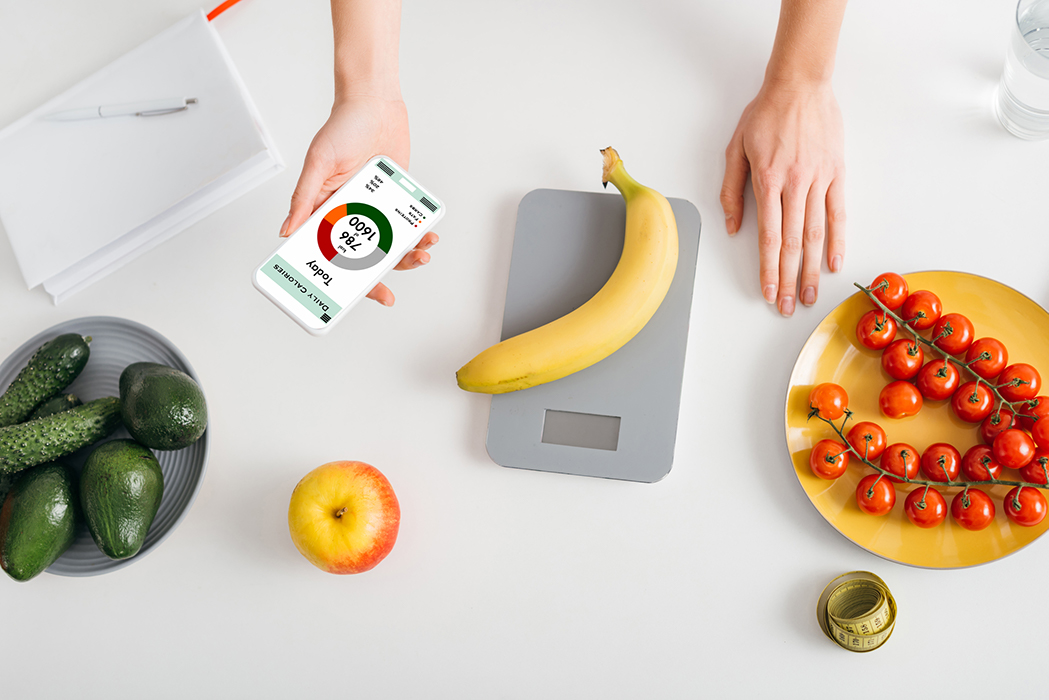A lot of people struggle to figure out how to lose weight on a tight budget. Maybe you’ve been working hard but have found your progress is stagnating or even going backwards. If that’s the case, then you’re in the right place!
In this post, we’ll walk through 26 tried-and-true techniques to get you back on track and headed towards a slimmer waistline without breaking your bank account.
If you’re ready to lose weight, then let’s get started!
1. To save money and stick to your weight loss goal, cook all of your meals at home. You will cut costs and calories by choosing pre-prepared meals over fast food or restaurant meals. Make a variety of large meal batches each week and keep them in a food container in the refrigerator for up to a week. More importantly, you can control the ingredients in your food by making it yourself.

2. Organize Your Grocery List Before You Go Shopping. Write down everything you need to buy on a grocery list, then go shopping once you are done with breakfast. This will help you remember to grab healthy foods like fruits and vegetables that are high in fiber as well as healthy protein sources like dry raw lentils, legumes, and whole grains.
3. Protein Sources That Aren’t Expensive. When you’re trying to lose weight, it’s important to consume foods that contain high-quality protein. Many sources of protein are expensive, but there are a few ways around this issue. For example, opt for chickpeas, non-gmo soybeans, white beans, black beans, peas, tofu, eggs, lentils, peanuts, quinoa, yogurt, and other soy-based protein sources rather than red meats and poultry, which tend to be pricier.
4. If you want to reduce weight, a meal plan can be a powerful tool. Weight loss does not happen overnight. To help people lose weight and get fit, we need to make changes to our lifestyle that last. By planning ahead and having healthy meals on your refrigerator, things will become clear on what you should and shouldn’t eat. Why not go on our 4 weeks Clean Eating Challenge? It’s going to be fun and it’s worth it! When it comes to planning your meals each week, you can also choose from a wide choice of healthy recipes listed throughout the plan. After a long period of deprivation, your body needs the vitamins and minerals it hasn’t had in a long time to get back on track. Download our free meal planning apps for Android and iOS to begin your 7-day trial. Getting started with our recipes is easy with our step-by-step guide!
5. Choose water as your preferred beverage. If you drink 1 gallon of water a day, you’ll be less likely to snack or eat more than you normally would, which can lead to weight loss. It’s the number one beverage we consume that gets us the most bang for our buck. It’s also the healthiest of all beverages (compared to soft drinks or soda, which cost about three times as much per ounce). You will be consuming fewer calories and sugar when you drink water rather than empty calorie beverages. The average person consumes 126 extra calories in each meal from soda alone.

6. Going Green is Super Cheap! Every little bit helps with weight loss. Eat a balanced meal of proteins, fruits, veggies, and whole grains at every meal to avoid overeating carbs later in the day. Keep some high protein veggie or fruit smoothies in the kitchen so that you can snack on them throughout the day without overeating carbs.
7. Planning your snacks ahead of time will prevent you from buying something unhealthy out of a momentary craving. If you’re on a budget, buy healthy snacks like vegetables and fruits (especially apples), non-fat Greek yogurt, whole grain crackers with peanut butter or cottage cheese, reduced fat cheese sticks, and lean proteins like chicken breast or fish.
8. Use whole grains when cooking at home. Whole grains are rich in fiber and can be tasty when incorporated into your meals. They also provide a good source of carbohydrates that we need daily (which helps us feel full). This is a great way to eat healthy without breaking the bank.
9. A farmers’ market is a great place to find locally grown seasonal produce at a cheap price. Not only are you supporting local produce farmers, but you’re getting the freshest vegetables and fruit for a lower cost. Your local farmers’ market will provide rich nutrients from fresh organic foods. Seasonal foods, always on sale at your local farmer’s market, can provide fresh vegetables and fruit at an extremely low cost. Many people opt to grow their own food, but if you don’t have time or space to dedicate to your garden, consider buying from a local farmer’s market.
10. Increasing the amount of vegetables you eat is a fantastic way to save money on your grocery bill while increasing your fiber intake and decreasing your calorie intake at the same time! A great way to do this is by eating stir fry with a ton of vegetables.
11. Eat only when you’re hungry. Avoid eating just because it’s a certain time of day or because you’re bored, anxious, upset, or stressed. If you know that the only reason you’re eating is to pass time or fill a void, then start looking for other ways to fill your time and make yourself feel better.

12. In a healthy diet, protein and fat should take precedence over carbohydrates. In order to optimize your metabolism and increase muscle growth, you should increase your protein and fat intake as much as possible. Eat something that makes you feel wonderful. According to studies, eating a nutritious meal can help you lose weight and boost your energy levels throughout the day. Maintain a healthy diet. When you’re attempting to lose weight, you should eat a wide variety of foods rather than sticking to one food group or one food group in particular.
13. Ready to lose weight? Start by using your fork, not your fingers. It’s important to understand that it takes a while for new behaviors to become habits. Your fork is an important tool in the battle of the bulge; so use it wisely. Use a small plate, too; this way you’ll still feel like you’re eating plenty even when you’re not eating as much food as usual.
14. Buy healthy food in bulk. When you do have to buy individual servings, buy them in bulk, buy a whole chicken instead of chicken breast, and avoid expensive packaging. It’s the same when it comes to purchasing large packages of lentils, legumes, rice, frozen vegetables, and berries.
15. Eating Mindfully. In order to lose weight, you need to be truly mindful of what you’re doing. It doesn’t mean that you need to stop watching your favorite sitcom or TV series, or go on a long meditation retreat. It means that you need to be fully present and chew 30 to 50 times for every bite of your food.

16. The economic benefits of intermittent fasting. Consume your meals as close together as possible.The body will adjust to the sheer number of hours between food intake and no matter how many calories you consume, your body will not store them as fat. If you’re trying to lose weight and stay healthy, try intermittent fasting.
17. Reducing the amount of food that is thrown away at home. Keep an eye out for damaged or expired food, and donate extras to the homeless shelter. This will help others and make you feel better, while saving you a bit on your budget.
18. Learn to say “NO.” Pack healthy snacks like apples, grapes, nuts, and plain greek yogurt when you’re going out to work or attend a party. You can always eat it before the party, and you won’t be tempted to eat junk food. Substitute unhealthy snacks with healthy options. If you crave ice cream, try frozen fruit or yogurt covered in chocolate chips or almonds instead. Or, if pizza is your problem food, swap your pepperoni for lean chicken breast; choose whole grain crust and low-fat cheese over processed cheese; and top with fresh tomatoes and spinach, which are packed with nutrients.
19. Cook at home. Cooking your own food not only provides you with a much healthier alternative, but it’s also a great way to stick to your budget and lose weight. Give yourself a break by letting someone else do all the cooking! Instead of going out to eat with co-workers or friends, take turns hosting dinners at each other’s homes instead.
20. Count your calories and carbs at every meal to prevent overeating. If eating out is a regular occurrence, eat only when you’re hungry and when you’re eating alone or with just one other person. It will take time to change your eating habits, but it is possible if you commit to making that shift.

21. Develop an Effective Workout Routine. Eat, exercise, drink water and sleep properly and you will lose weight. Drinking water helps with digestion. Exercise is proven to be the best way to burn fat, build muscle and reduce body weight. You should eat a healthy diet and exercise regularly, even if it’s just for 10 minutes a day. Eating healthier foods will help control your blood sugar levels, which can help with weight loss by reducing cravings for sugary snacks and food.
22. It’s important to understand that everyone’s body is different, which means that the way you approach dieting and exercise is going to depend on what you find most helpful. If you’re someone who has a hard time restricting yourself when it comes to food, then start with a low calorie diet. This will allow your body to feel more comfortable with the amount of calories being consumed and will be easier on your body as well as your mind.
Are you happy with our low budget strategy? We’ve got something that will forever alter your perspective on food budgets. When there’s a simpler, less stressful solution accessible in this day and age of technology, why persist with what hasn’t worked before? Let us help you plan your meal from the comfort of your own home with our free Android or iOS apps. Check out a free 7-day trial here. See you on the inside!




